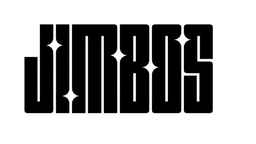DA vs. Rotary Polisher: Which One Should You Use for Paint Correction?
If you're getting into paint correction and polishing, one of the first questions you'll face is: should I use a DA (dual action) or rotary polisher? Both have their place in the detailing world—but the right choice depends on your experience level, paint condition, and correction goals.
This guide breaks down the pros, cons, and use cases for both tools—so you can get the best results possible with products like Picture Perfect Polish.
What Is a DA Polisher?
DA stands for "dual action." These polishers spin in a circular motion while simultaneously oscillating (like a random orbital). This motion mimics hand polishing but with more speed and consistency.
- ✅ Beginner-friendly and safe
- ✅ Low risk of burning paint
- ✅ Excellent for one-step corrections
- ❌ Slightly less cutting power compared to rotary
What Is a Rotary Polisher?
Rotary polishers spin in a single, direct circular motion. They're faster and more powerful—but they generate more heat and can quickly damage paint if misused.
- ✅ Maximum cutting ability
- ✅ Ideal for severe defects, oxidation, and compounding
- ❌ Higher learning curve
- ❌ Easy to cause holograms or burn-throughs if not used properly
When to Use a DA Polisher
If you're new to polishing or working on modern clear coats, a DA is your best bet. It's nearly impossible to mess up with one, and you'll still get amazing results using Picture Perfect Polish and the right pad.
Best For:
- One-step polishing
- Removing light to moderate swirls
- Finishing passes after compounding
When to Use a Rotary Polisher
Rotary polishers are best reserved for professional detailers or experienced users correcting heavily neglected paint.
Best For:
- Removing deep scratches and oxidation
- Heavy compounding before a polishing step
- Harder paints like German clear coats
DA vs. Rotary Comparison Table
| Feature | DA Polisher | Rotary Polisher |
|---|---|---|
| Motion | Oscillating & rotating | Rotating only |
| Cutting Power | Moderate | High |
| Finishing Ability | Excellent | Requires skill to finish clean |
| Ease of Use | Beginner-friendly | Advanced |
| Risk Level | Low | High |
Customer Testimonial
"I used Picture Perfect Polish on both a DA and rotary. It finished down perfectly on my DA with a foam pad—and even handled rotary heat like a champ. Awesome product." – Verified Buyer
Tool + Product Combo for Best Results
No matter what machine you’re using, pairing it with the right product makes all the difference. Picture Perfect Polish is safe for both DA and rotary use and adapts based on pad choice and pressure.
Where to Buy
Related Blog Posts
FAQ: DA vs. Rotary Polishers
Can I use Picture Perfect Polish with a DA polisher?
Absolutely. It’s designed to work flawlessly with DA polishers for safe, effective one-step correction and finishing.
Is rotary better for swirl removal?
It can be faster for heavy defects, but it’s riskier. DA polishers are safer and can still remove most swirls with the right pad and polish combo.
What if I already own both machines?
Use the rotary for the initial cut, then switch to a DA and foam pad for finishing. Picture Perfect Polish works great for both steps.
Final Thoughts
Both DA and rotary polishers have their place in paint correction. If you’re just starting out, a DA is safer and more forgiving. If you’re more experienced and need aggressive cutting power, a rotary can save time—just be prepared to finish it down properly. Whichever you choose, Picture Perfect Polish delivers consistent, high-gloss results on both tools.



